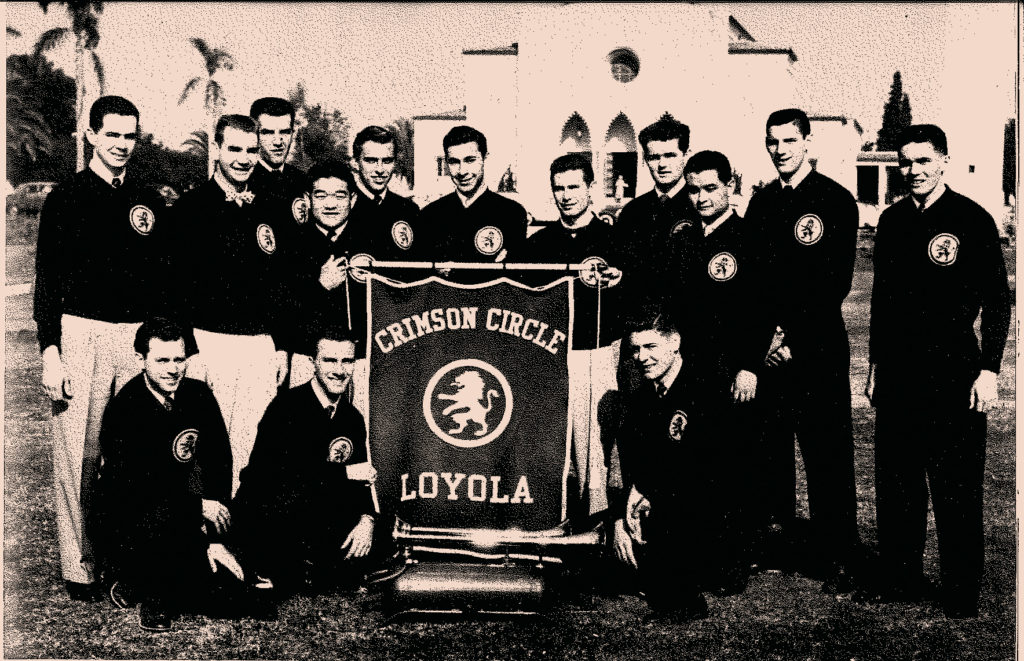
This fall, LMU’s oldest service organization, Crimson Circle, will celebrate a legacy of commitment to the university that stretches back nine decades. On Nov. 2, members of a group that was founded in 1929, just two years after then-Loyola University moved to Westchester, will mark their 90th anniversary with a reunion.
Founded to help enforce the student conduct code at assemblies and athletic events, Crimson Circle evolved into an organization that supported the president’s office and the university and devoted itself to service on and off campus. Among the group’s service sites today are St. Columbkille School in South Los Angeles and the Midnight Mission in downtown L.A. Crimson Circle also helps organize an on-campus blood drive that produces blood donations to the UCLA Blood and Platelet Center.
Wayne Negrete, S.J., assistant director of the LMU Center for Ignatian Spirituality, was the Crimson Circle moderator from 1993–95. LMU’s service orgs are committed to being “men and women for others,” but members themselves often are changed by the experience, he points out. Crimson members aren’t necessarily chosen because of their previous history of service. In fact, Crimson may be their first experience of it.
“They begin to see connections between what they do for service and the university in terms of their own faith and goals in life,” Negrete says. “They get energized.”
Father Mike Perucho ’02, associate director of vocations for the Archdiocese of Los Angeles, says his involvement with Crimson brings to mind the words “fraternity, faith and service.” He remembers many hours spent at St. Columbkille School, time that made him “grateful for God’s blessings in his life and the opportunity to give back.”
Raleigh Burk ’20, the current president of Crimson Circle, says the org is a product of the work of countless members who have come before him. He feels a responsibility as head of his service org to act with honor and respect.
“I ask myself can I add something to this community and the future legacy of Crimson Circle. I want to make sure that I select men who can wear our sweater and uphold the legacy of a history that’s been 90 years in the making.”
For more information about the Crimson Circle 90th anniversary celebration, go to alumni.lmu.edu.
This article appeared in the spring 2019 issue (Vol. 9, No. 1) of LMU Magazine.
